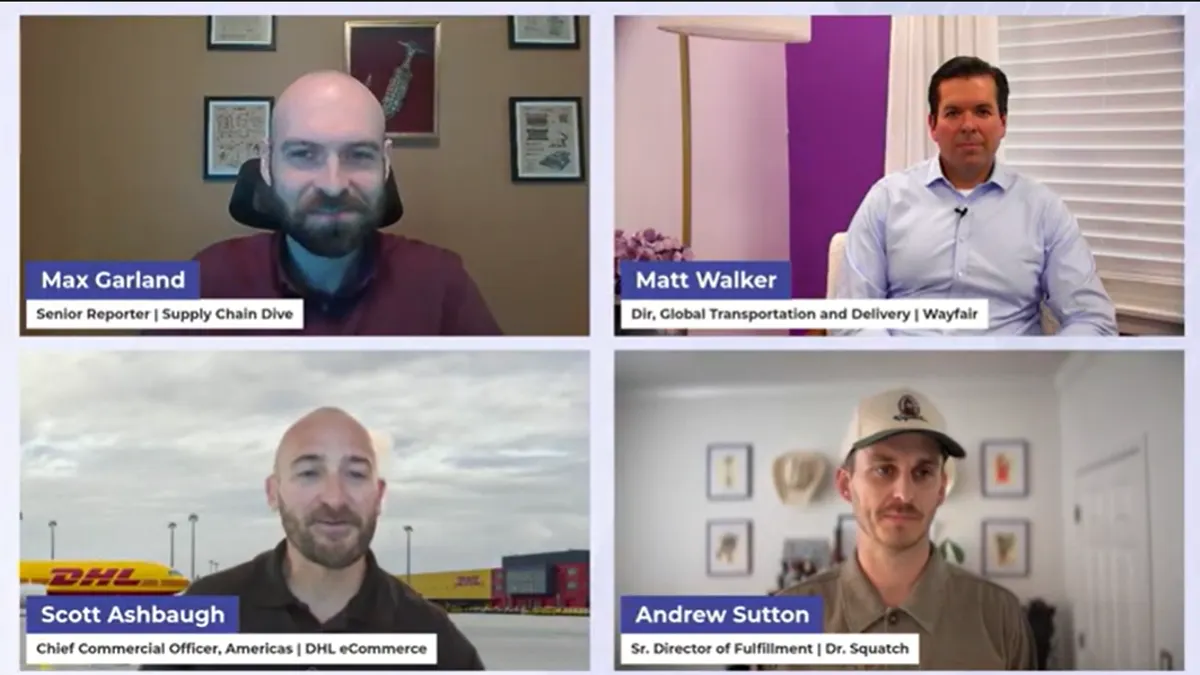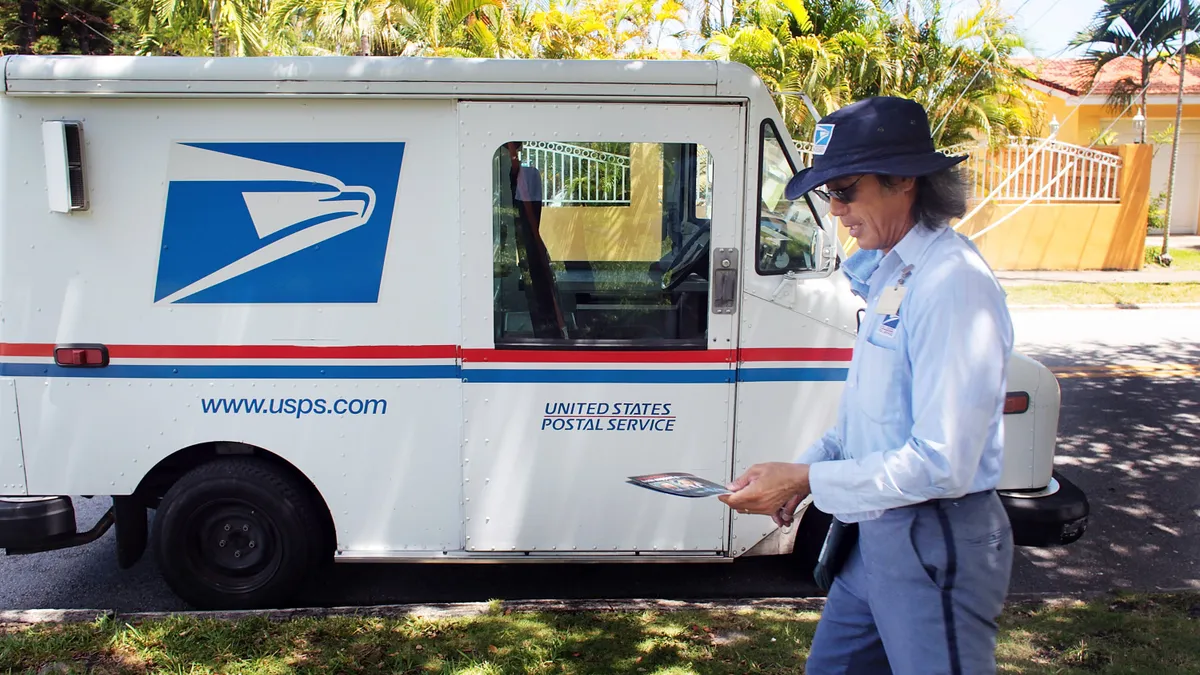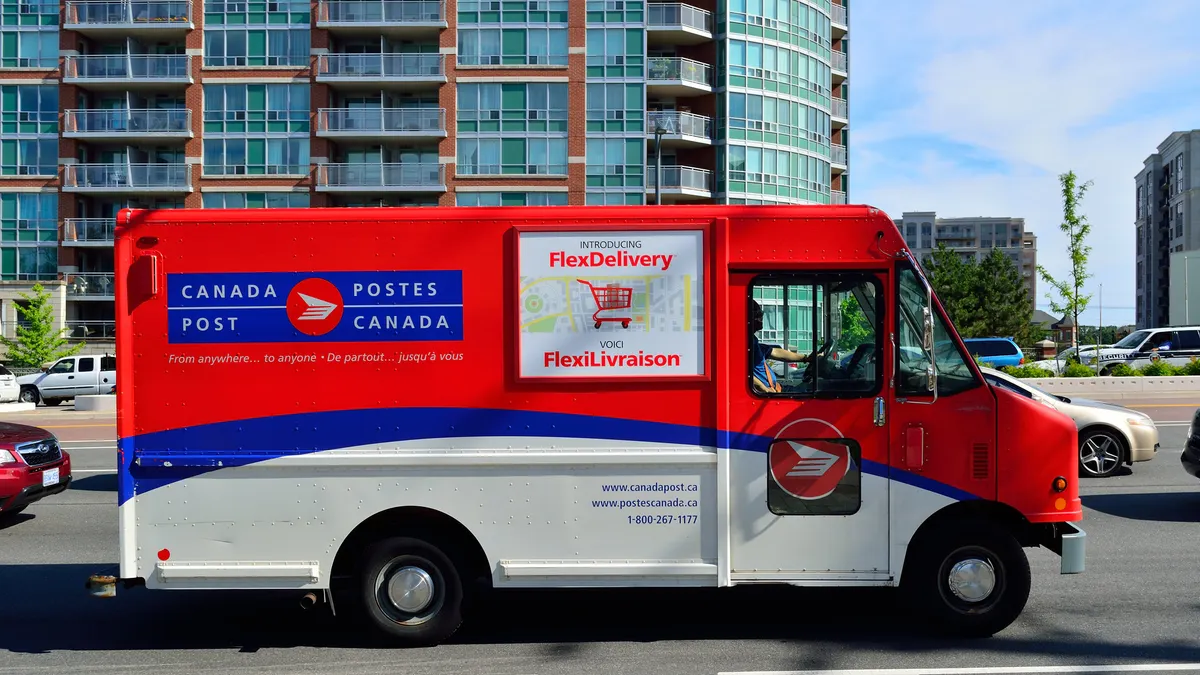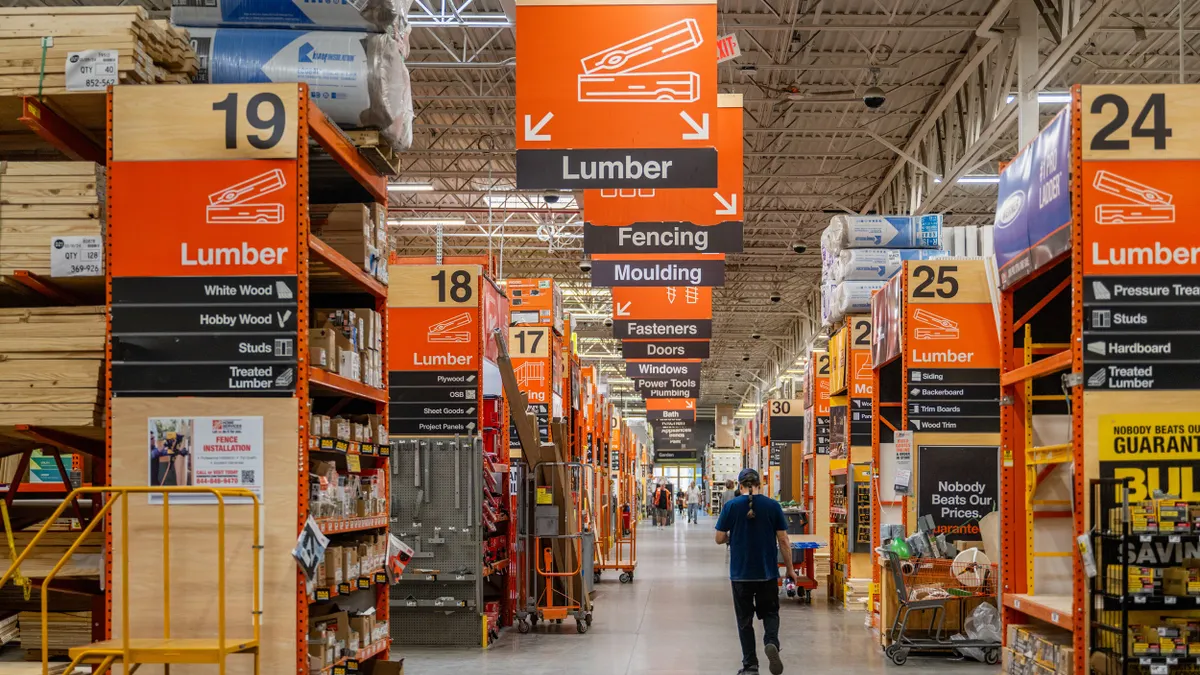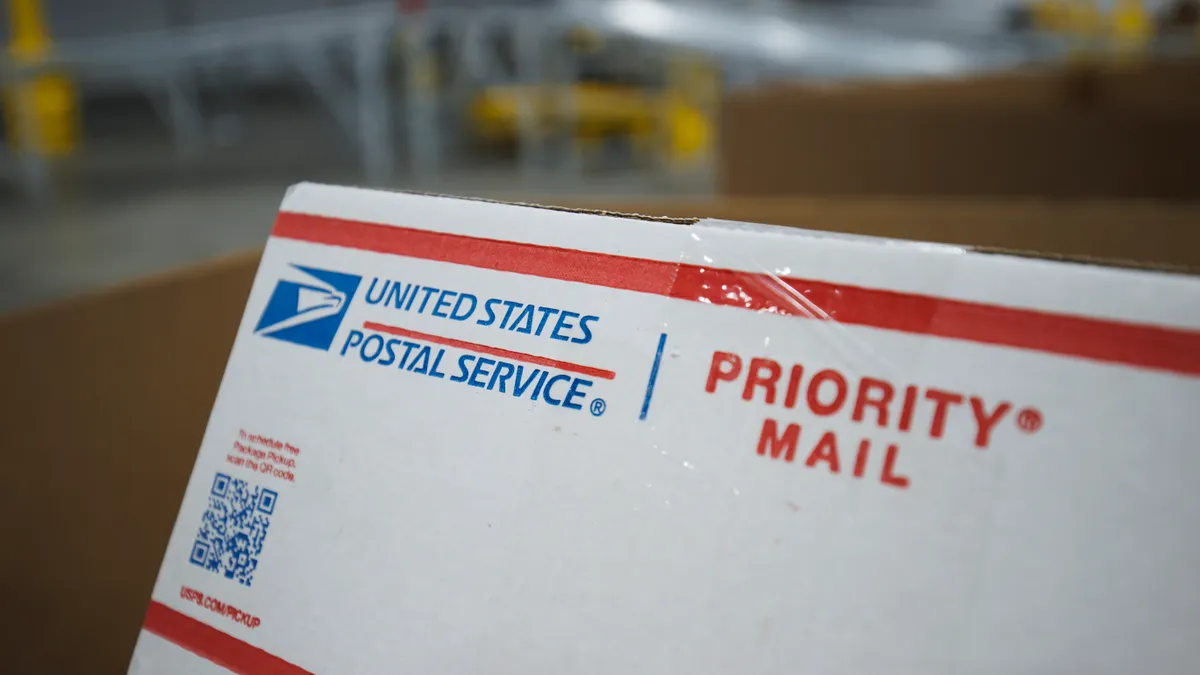Editor’s note: This story is part of a series highlighting takeaways from a May 7 event hosted by Retail Dive and Supply Chain Dive. Register here to watch the replay on demand.
Setting clear expectations, aligning goals, planning in advance and consistently evaluating performance are some of the keys to forming win-win relationships between last-mile shippers and delivery partners, according to experts.
“Successful delivery requires more than just the transactional interactions with your third-party partners,” said Matt Walker, director of global transportation and delivery at furniture e-commerce retailer Wayfair, during Supply Chain Dive and Retail Dive’s “The state of e-commerce delivery” event last week.
Many companies say building relationships with delivery partners is important, but strengthening and maintaining those connections takes focused effort, especially for companies shifting or expanding their carrier mix.
For example, personal care products e-commerce retailer Dr. Squatch has grown from working with two or three carriers to partnering with third-party logistics providers, which gives the retailer access to nearly 10 carriers, according to Andrew Sutton, senior director of fulfillment for the company.
While Dr. Squatch is aggressive in negotiations during initial contacts with new delivery partners, per Sutton, the company looks to cultivate “shared pain and gain” partnerships so both sides can succeed.
“Successful delivery requires more than just the transactional interactions with your third-party partners.”

Matt Walker
Director of global transportation and delivery at Wayfair
Building the foundation for that shared success begins with aligning expectations and goals, panelists said.
“A simple and probably silly example of this is ensuring you guys are talking in terms of days,” Sutton said. “So whether it's business days, postal days or calendar days, could be a good way to just clear any ambiguity or confusion there.”
It is also important to dig into the finer details and line items of contract agreements so shippers don’t see a bill with unexpected charges, said Scott Ashbaugh, chief commercial officer for the Americas at DHL eCommerce.
On the carrier side, delivery partners need to ensure they understand the amount of volume shippers expect to send out, which makes collaborative planning and forecasting essential.
“Any amount of communication on forecasting helps. And, you know, no time is too late, so give us the heads up before the trucks back up to the facility,” Ashbaugh said.
Giving more than a heads up can be even more beneficial, of course. Dr. Squatch forecasts months in advance with its partners, providing projections for metrics such as lines per order and units per order for outbound delivery.
“So any additional ammo that you can give your 3PL there helps them [with] better labor planning, throughput planning, and ultimately provides a better experience for your customers,” Sutton said.
This is especially important for a subscription-based company like Dr. Squatch that tries to convert its first-time consumers into repeat subscribers.
“We want to make sure that first-time experience is a positive one, and that we're not over-promising and under-delivering,” Sutton said.
Aligning and preparing is only part of the journey, as shippers and carriers need to consistently evaluate the performance of their partnerships to know when to make changes to optimize outcomes.
“Our first-time customer rate is high, and we're trying to convert all of our customers to subscribers, so we want to make sure that first-time experience is a positive one, and that we're not over-promising and under-delivering."

Andrew Sutton
Senior director of fulfillment at Dr. Squatch
Wayfair has regular performance dialogues and rigorously tracks performance with its carriers, according to Walker. The company does so with tools such as anomaly detection, predictive analytics and even automated decision-making powered by artificial intelligence.
“We're looking to move beyond the conventional performance dashboards by integrating AI that can detect and address potential delivery issues before customers are impacted,” Walker said.
Frequent communication and consistent data collection and analysis in a partnership can lead to quicker problem solving when issues arise, according to Walker.
“We don't debate what number is right, what number is wrong. It's collaborative problem solving,” Walker said. “These things can really prevent conflicting or competing priorities from emerging into the relationship.



